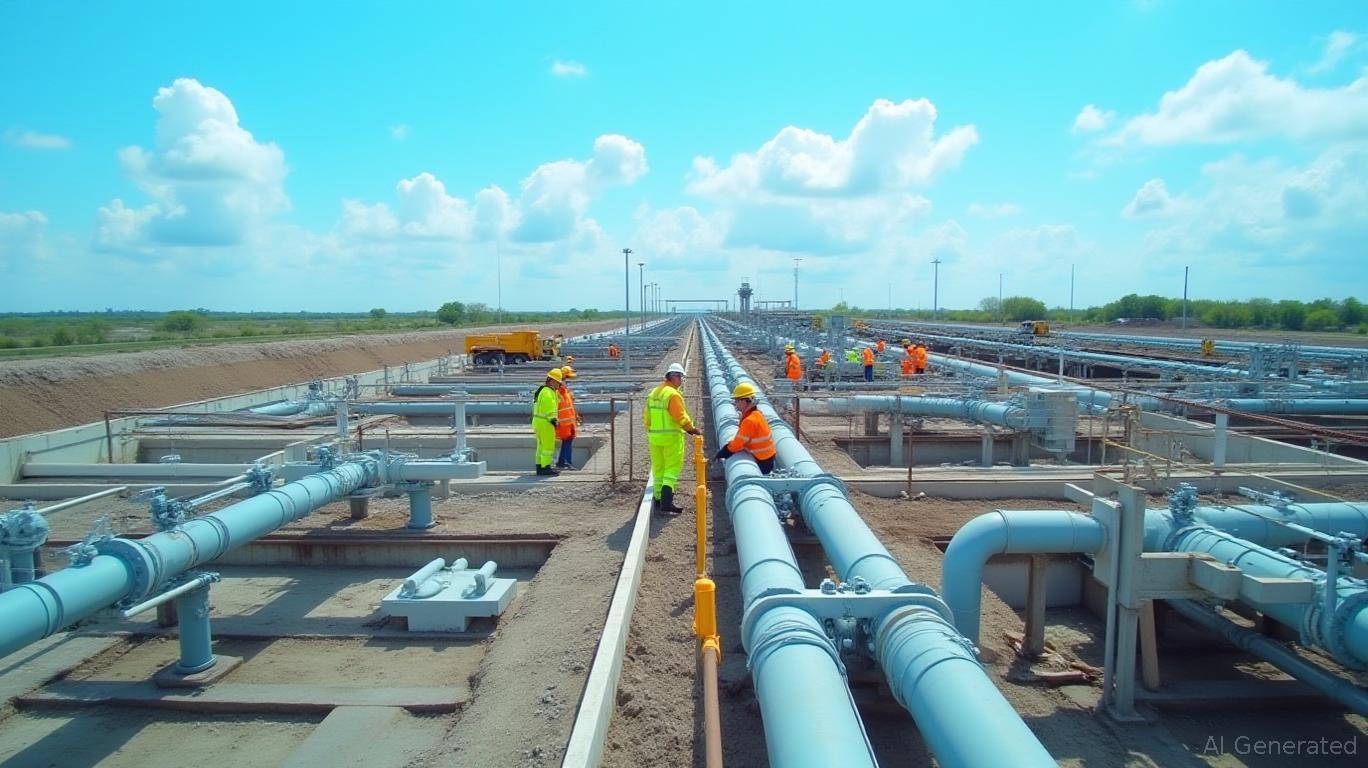Core & Main's Q1 Results: Can Margin Resilience Outweigh Inflation Headwinds?
Core & Main (NYSE: CNM) delivered a mixed performance in its fiscal 2025 first quarter, showcasing top-line momentum but grappling with margin pressures that underscore a broader industry challenge. With net sales up 9.8% to $1.91 billion, the company rode acquisitions and volume gains in pipes, valves, and storm drainage products. However, its gross margin dipped to 26.7%, down 20 basis points year-over-year, as rising inventory costs and inflation tested its ability to protect profitability. The question now is whether Core & Main can navigate these headwinds long enough to capitalize on the $1 trillion U.S. water infrastructure opportunity—or if its margin trajectory and debt burden will limit its upside.
The Top-Line Story: Growth, But at a Cost
Core & Main's sales growth is undeniable, driven by acquisitions and strong demand in water and sewer infrastructure. The company noted “accretive acquisitions” contributed meaningfully, while fire protection products—a weaker segment—saw declines due to lower end-market volumes and pricing. Yet, this growth came at a price. Gross profit rose 9.0%, but margin compression suggests input cost pressures are outpacing pricing power.

Margin Challenges: A Warning for the Sector
The real concern lies in the 14% spike in SG&A expenses to $293 million, which now account for 15.3% of sales—up from 14.5% in the prior year. This reflects rising personnel costs, inflation, and distribution expenses tied to higher sales volumes. Management framed this as a “necessary investment” in scaling operations, but the trend risks eating into future profitability. Meanwhile, operating income grew just 1.8%, highlighting the squeeze between top-line growth and rising costs.
This data visual would show whether the recent dip is an anomaly or part of a longer-term decline, critical for assessing margin resilience.
EBITDA Growth: A Modest 3.2%, Amid Crosscurrents
Adjusted EBITDA rose 3.2% to $224 million, a tepid pace given the top-line expansion. While gross profit gains provided a tailwind, higher SG&A and depreciation/amortization (due to acquisitions) offset much of the benefit. Management reaffirmed full-year guidance, projecting $950–1,000 million in EBITDA, but this assumes margin stability—a big ask given inflation's persistence and supply chain risks.
The Infrastructure Tailwind vs. Execution Risks
Core & Main's long-term thesis hinges on its dominance in water infrastructure, a sector buoyed by the bipartisan Infrastructure Investment and Jobs Act (IIJA) and the urgent need to replace aging systems. The company's geographic footprint and product mix position it to benefit from municipal spending on water utilities, wastewater management, and flood control.
However, three risks loom large:
1. Debt Levels: Net debt of $2.28 billion, despite recent reductions, leaves the company vulnerable to rising interest rates or delayed infrastructure spending.
2. SG&A Sustainability: Can the company rein in costs, or will its operational scale require continued investments?
3. Supply Chain Volatility: Input cost pressures could persist if global logistics bottlenecks resurface or commodity prices spike.
Data-Driven Thesis: Buy or Wait?
Core & Main's stock has underperformed the S&P 500 over the past year, down ~12% while the index rose ~7%. . This could present a buying opportunity if the company stabilizes margins and executes on its infrastructure bets. Key metrics to watch:
- SG&A as % of Sales: A return to sub-15% would signal operational leverage.
- Debt-to-EBITDA Ratio: Currently around 2.5x (based on $950M EBITDA guidance), but rising debt could pressure ratings agencies.
- Margins in 2025: If gross margin holds above 26%, it would suggest the company is managing costs effectively.
Historical data reinforces this threshold's significance: between 2020 and 2025,
Conclusion: A Hold with Long-Term Upside
Core & Main remains a compelling play on U.S. infrastructure needs, but its Q1 results highlight execution risks. While the company's reaffirmed guidance signals confidence in infrastructure spending, margin pressures and elevated SG&A raise near-term concerns. Investors should wait for signs of margin stabilization or a pullback in the stock to below $40—its 52-week low—to enter positions. For now, a hold rating seems prudent, with a bullish thesis contingent on the company proving its cost discipline in an inflationary environment. The road to sustained profitability is narrow, but the payoff for water infrastructure dominance could make it worth the wait. Historical performance further underscores that periods of margin resilience have historically rewarded patient investors, adding a data-backed layer to the long-term bullish case.

Comments
No comments yet